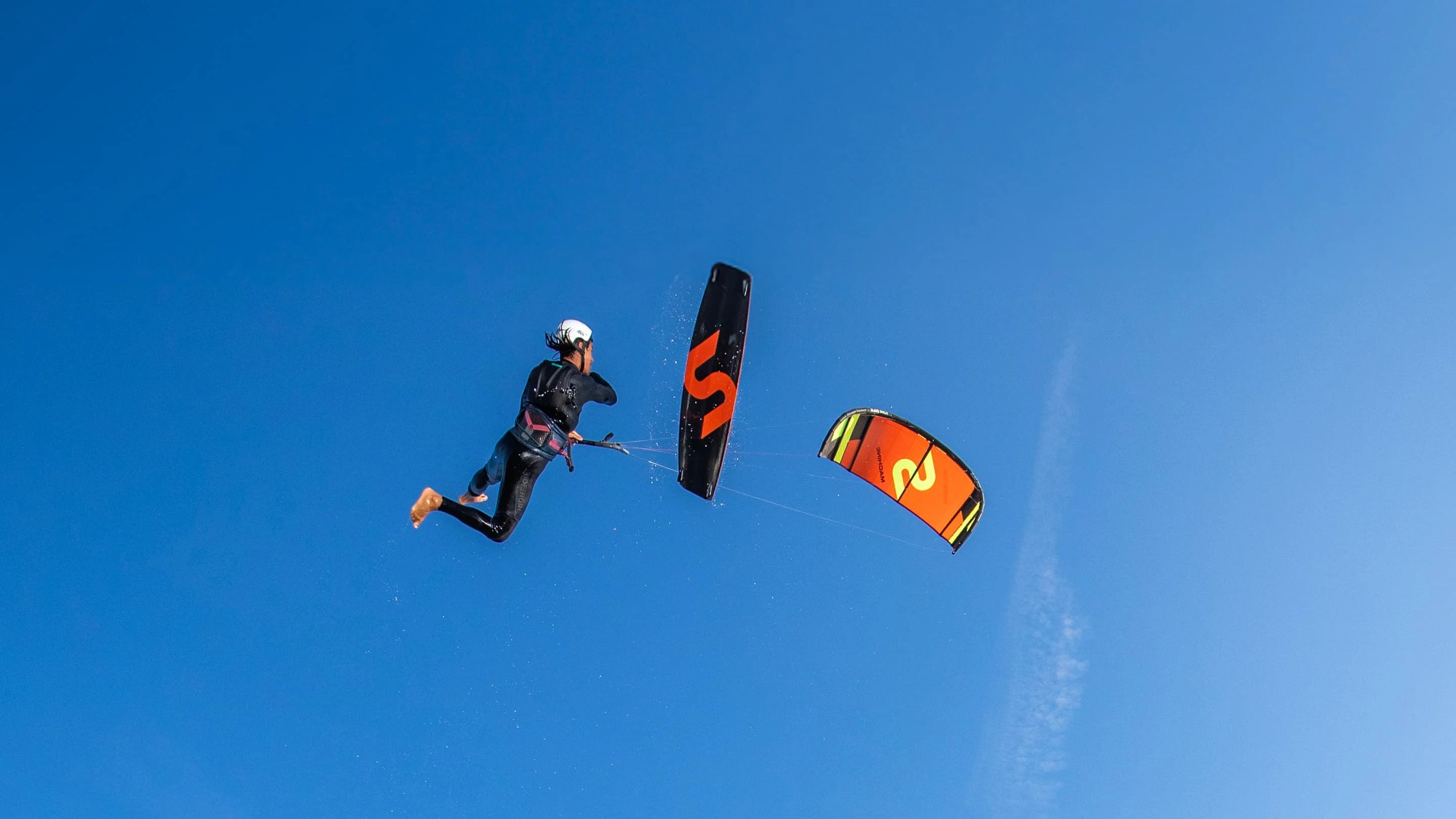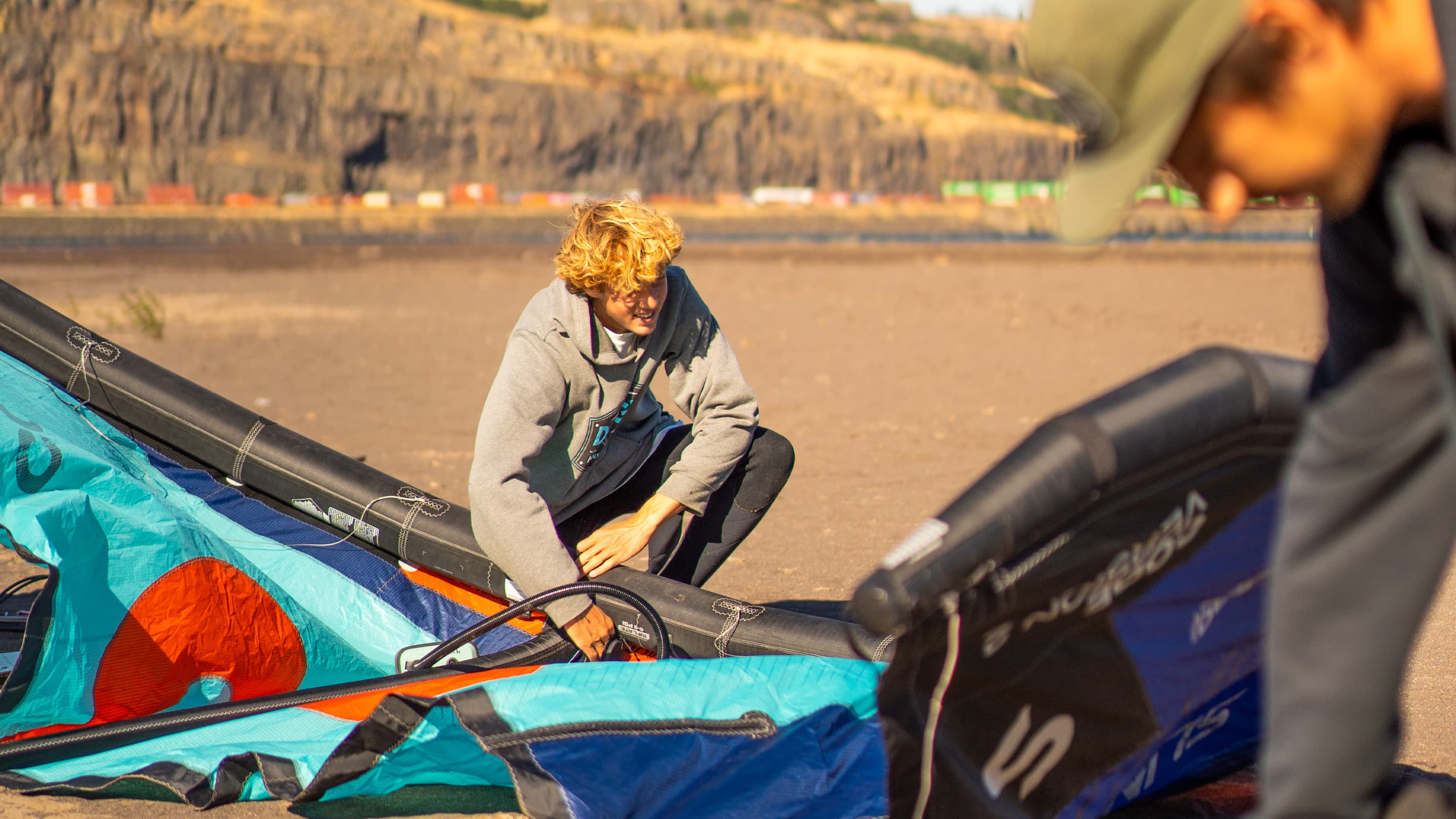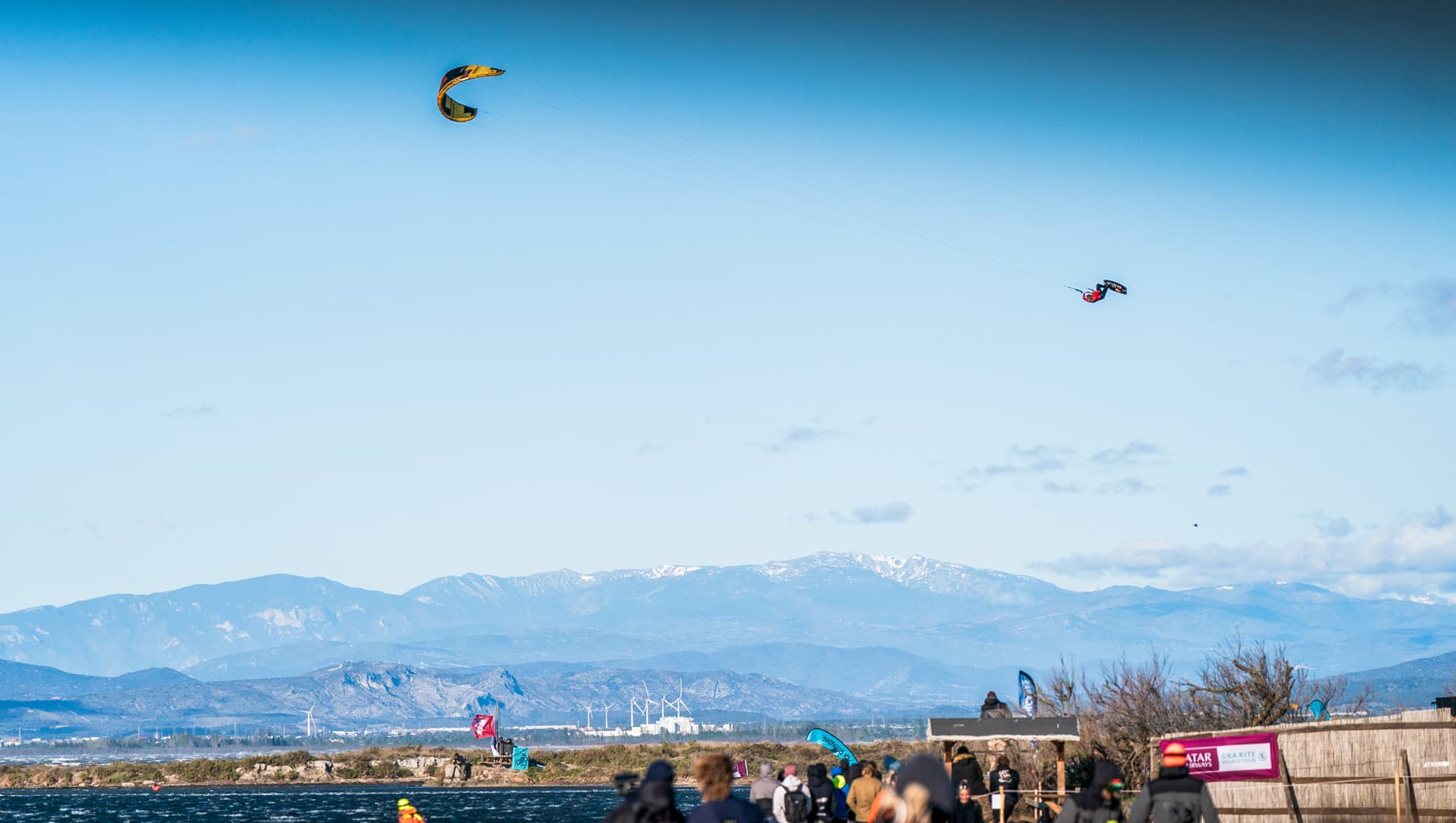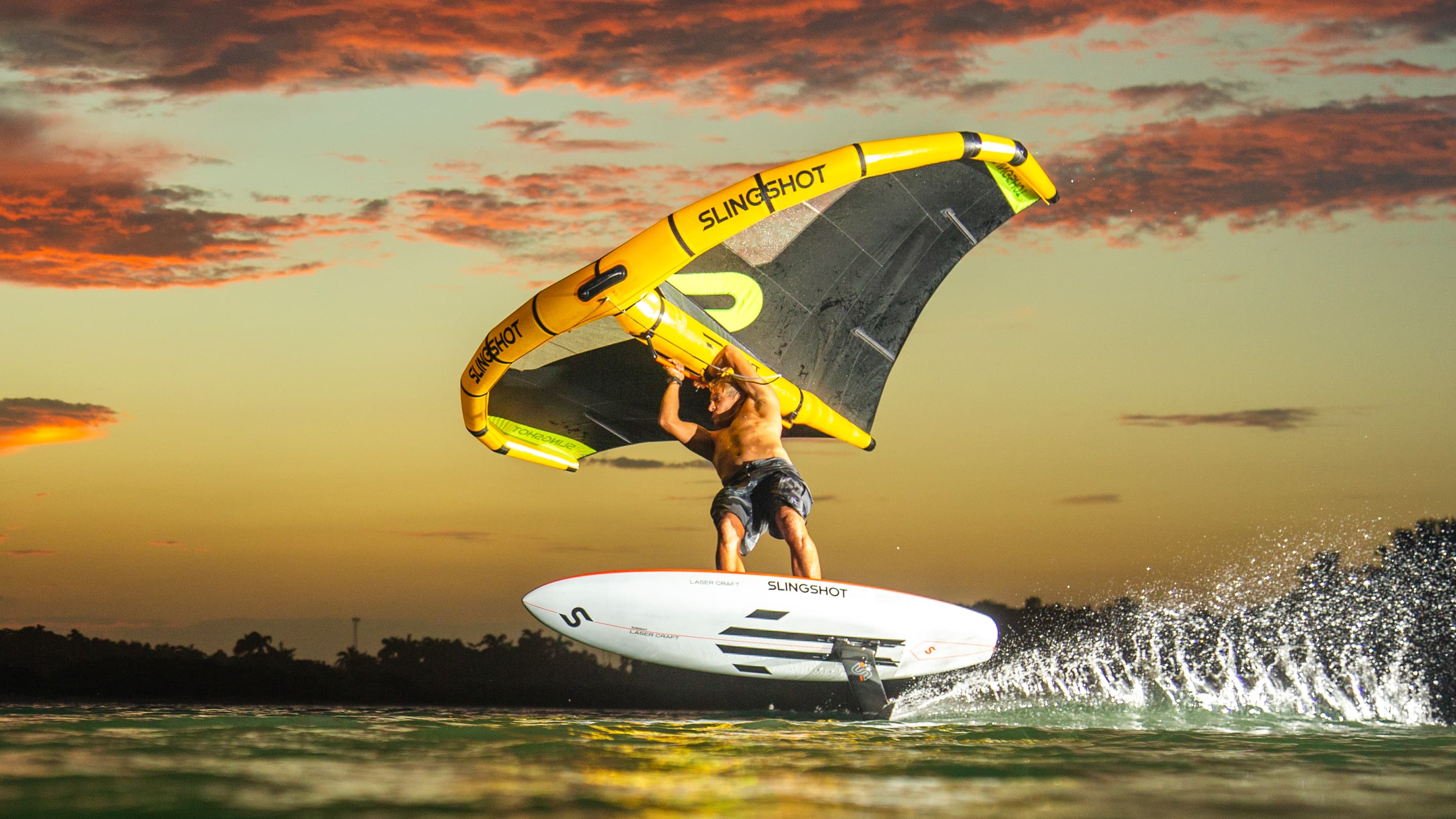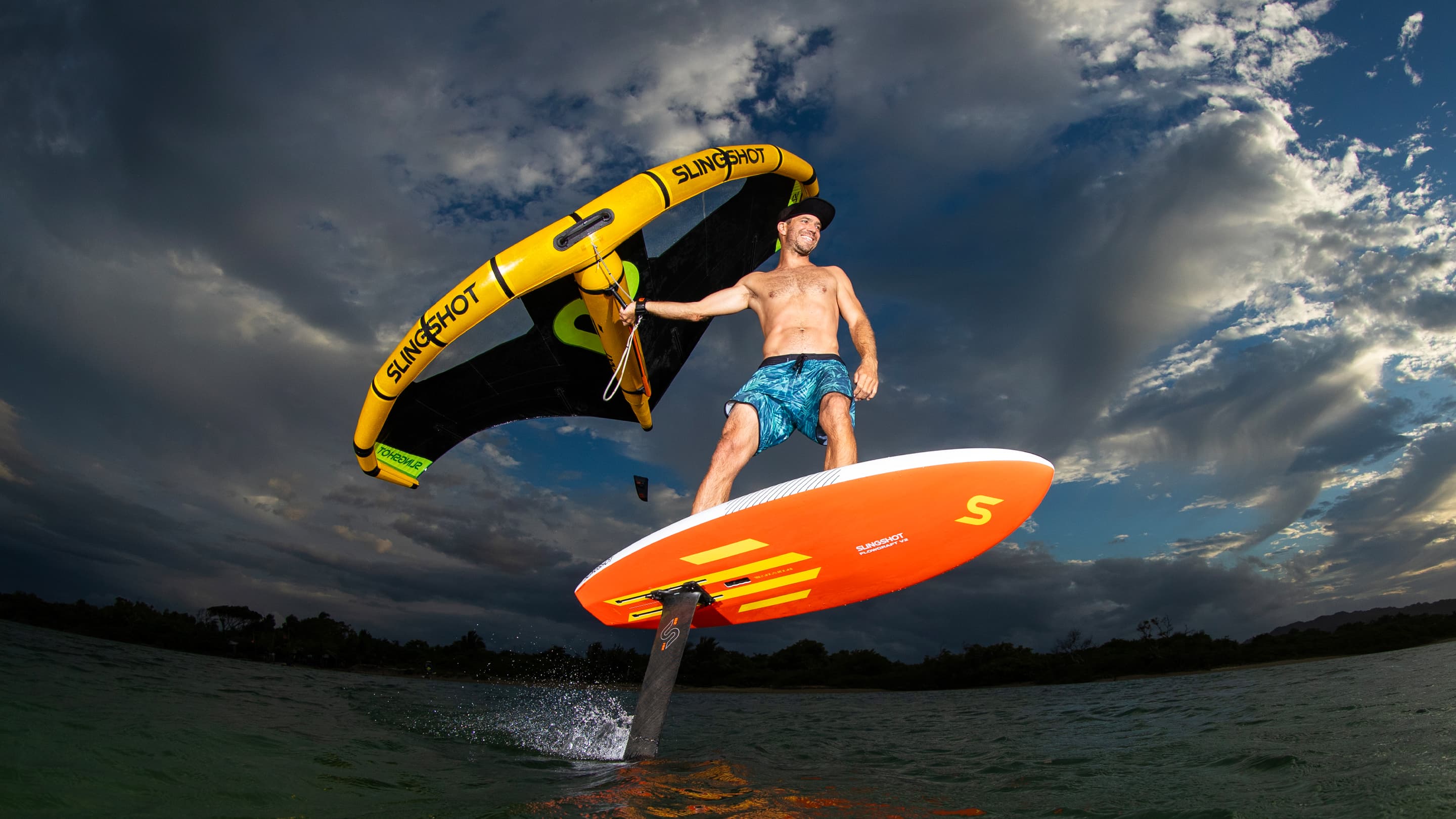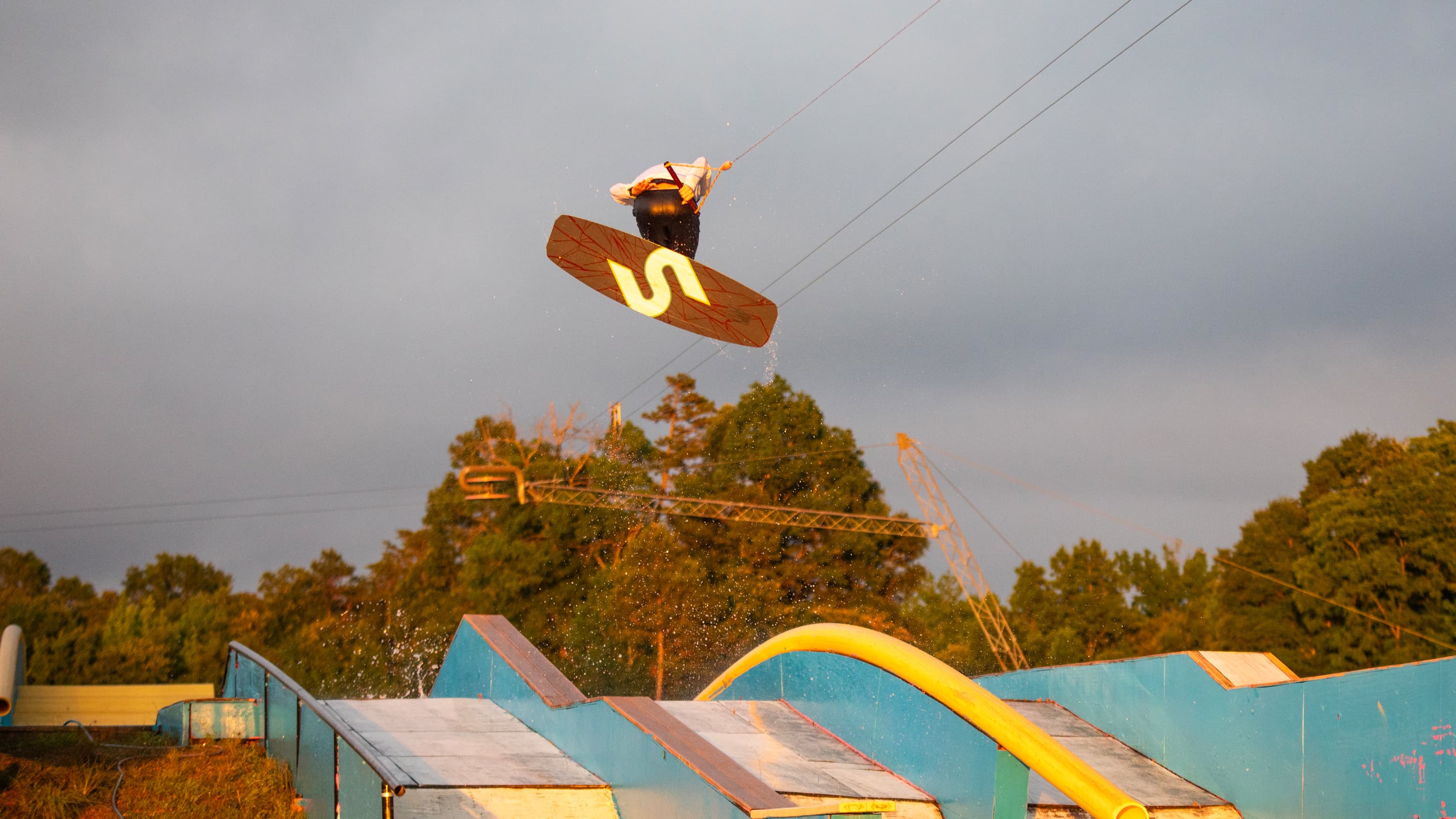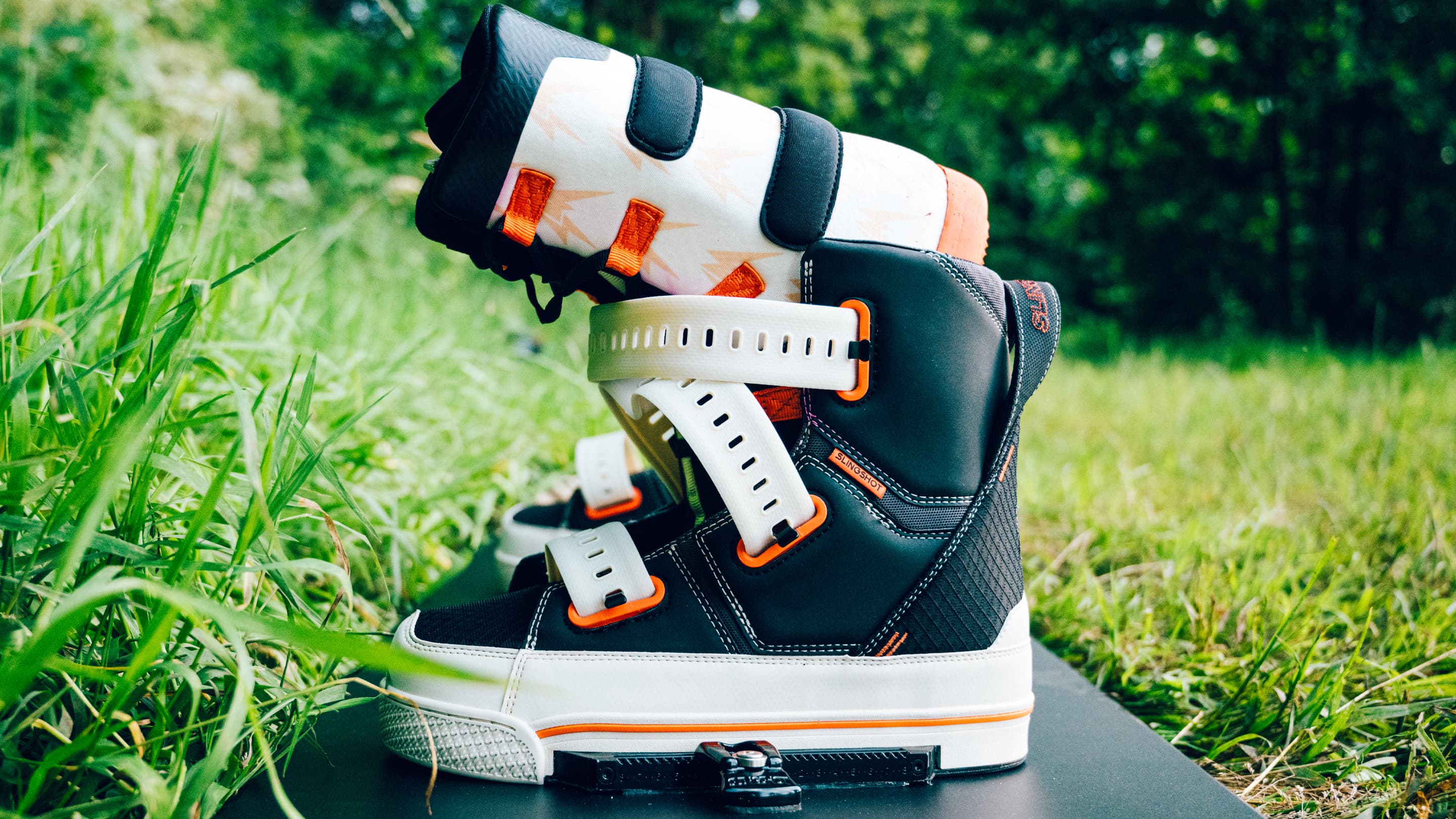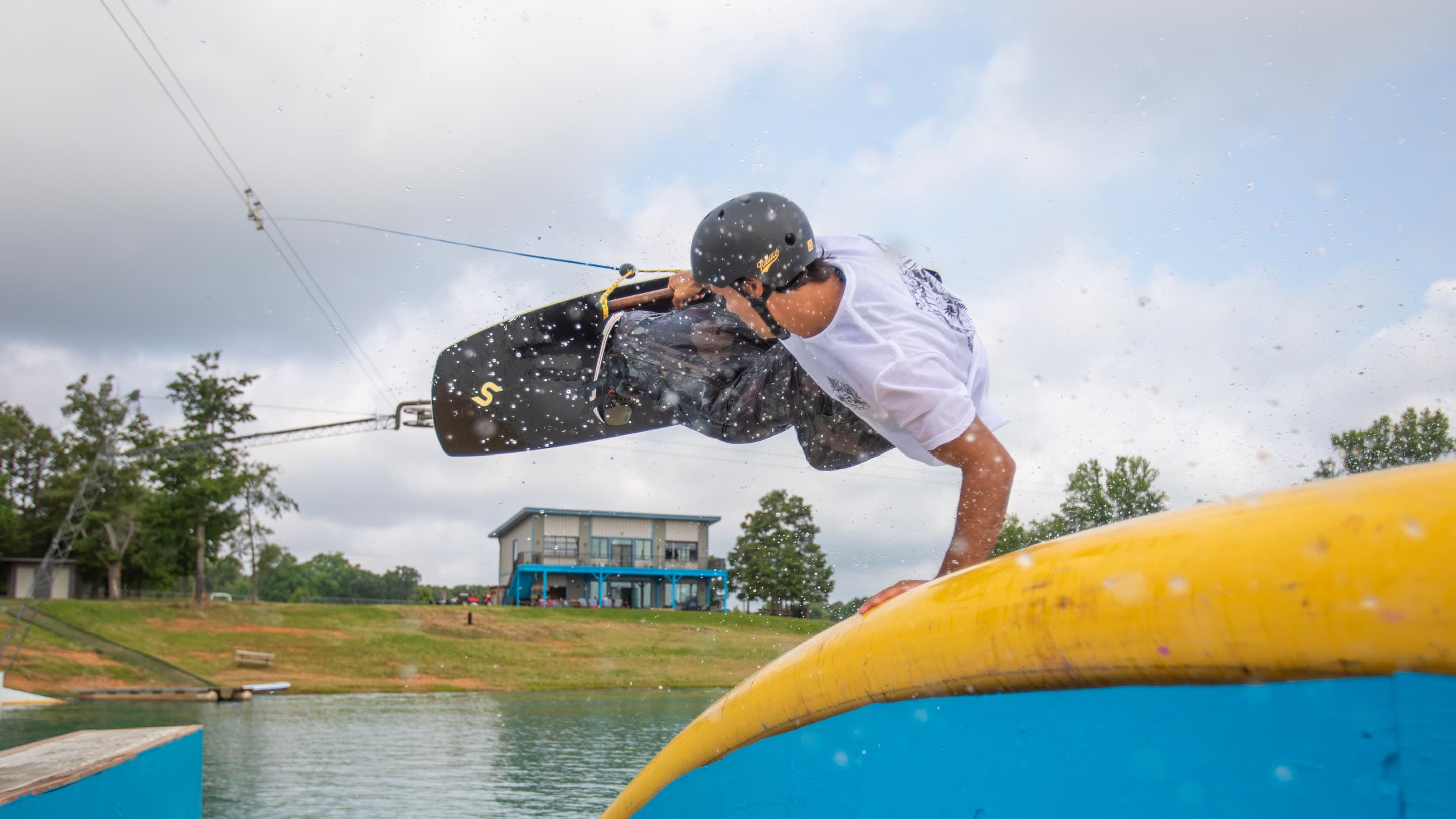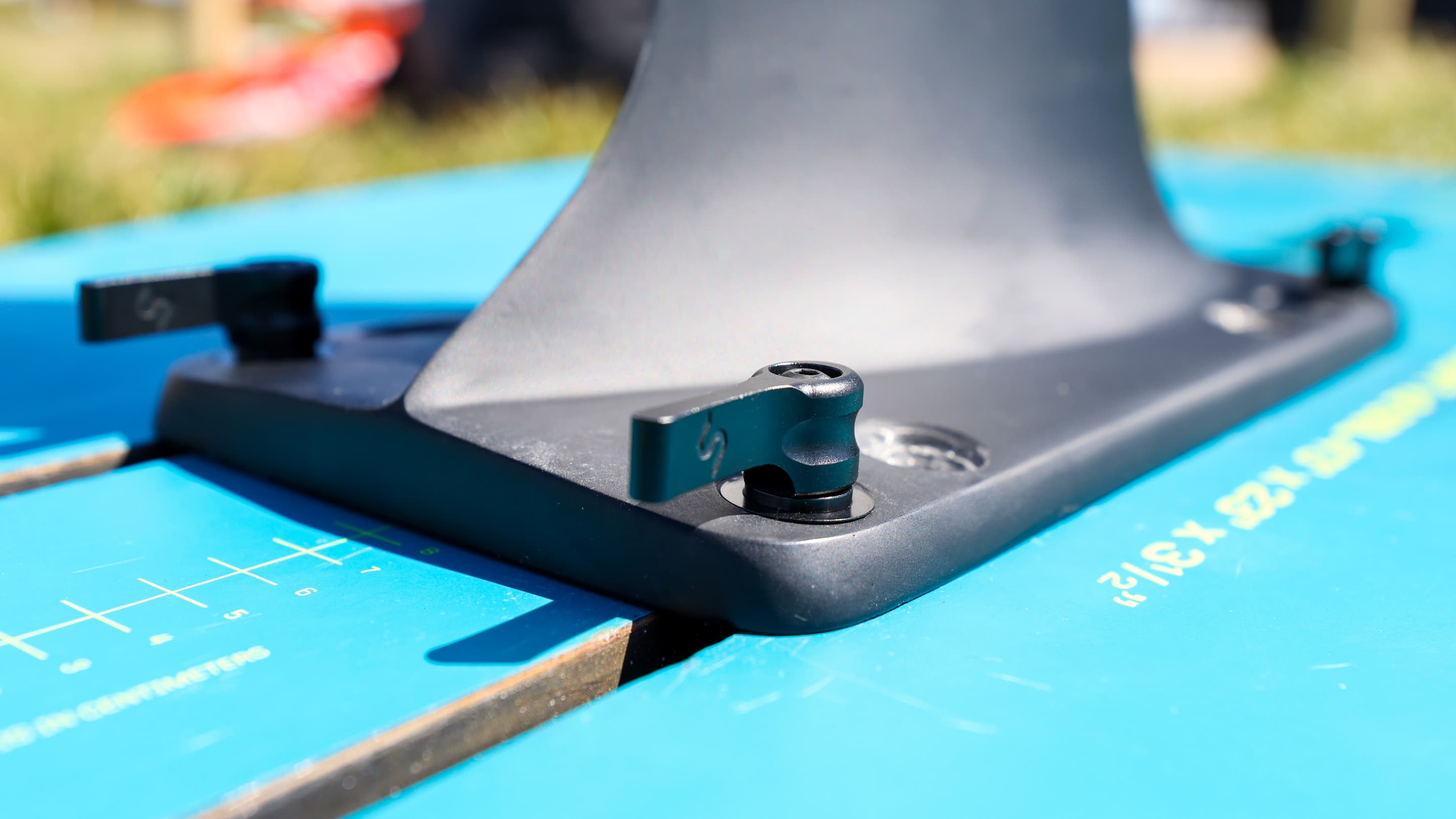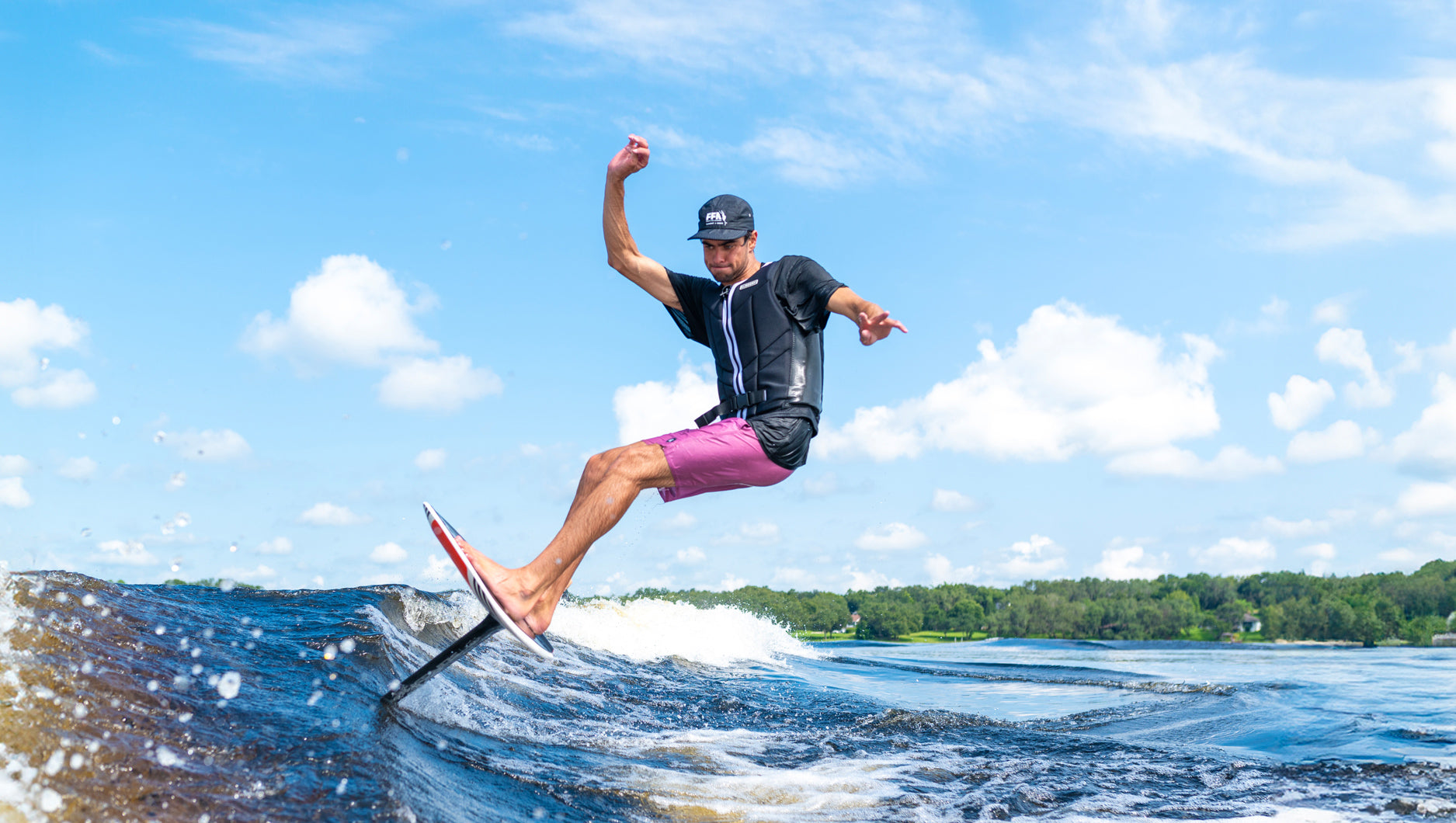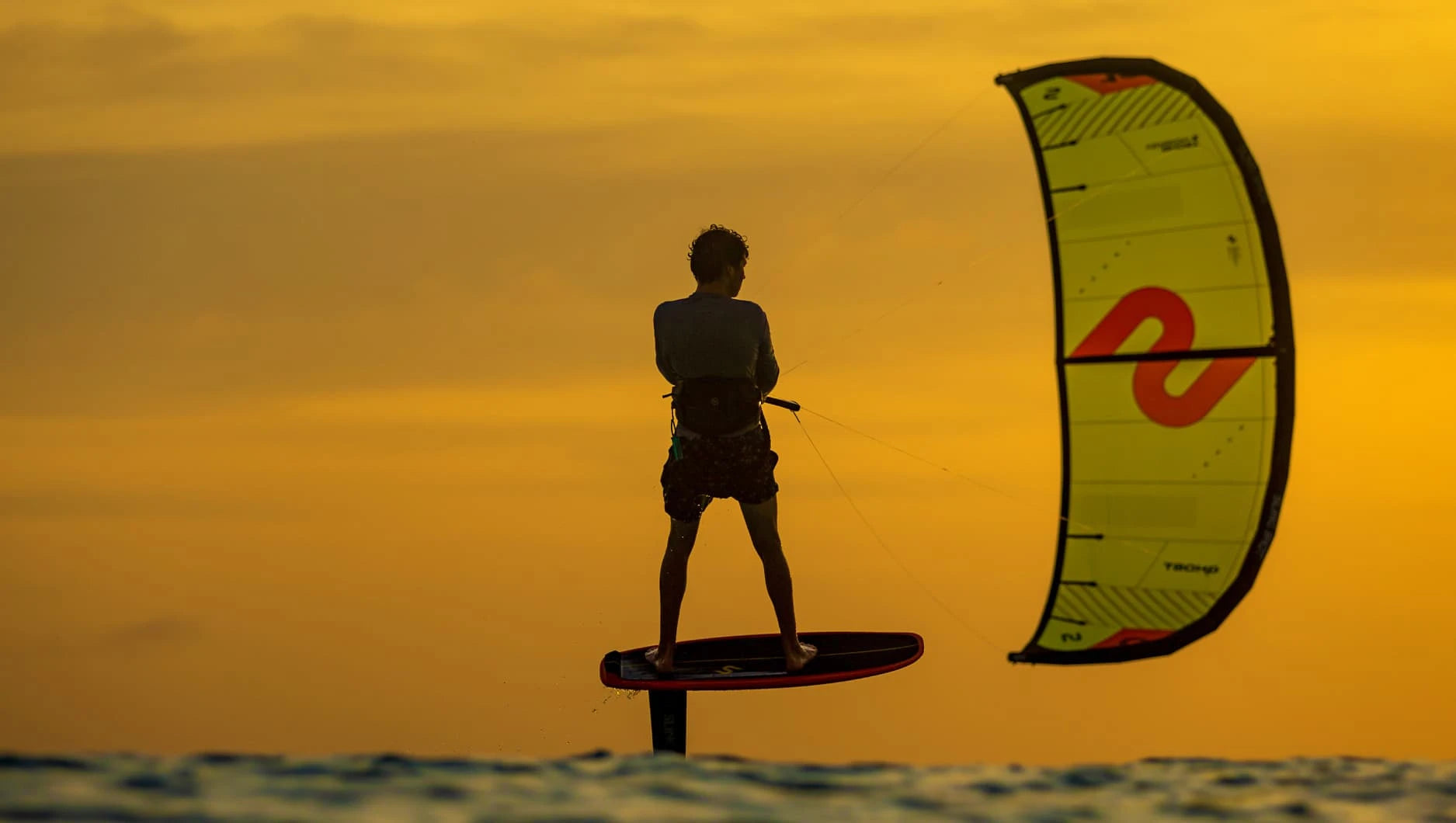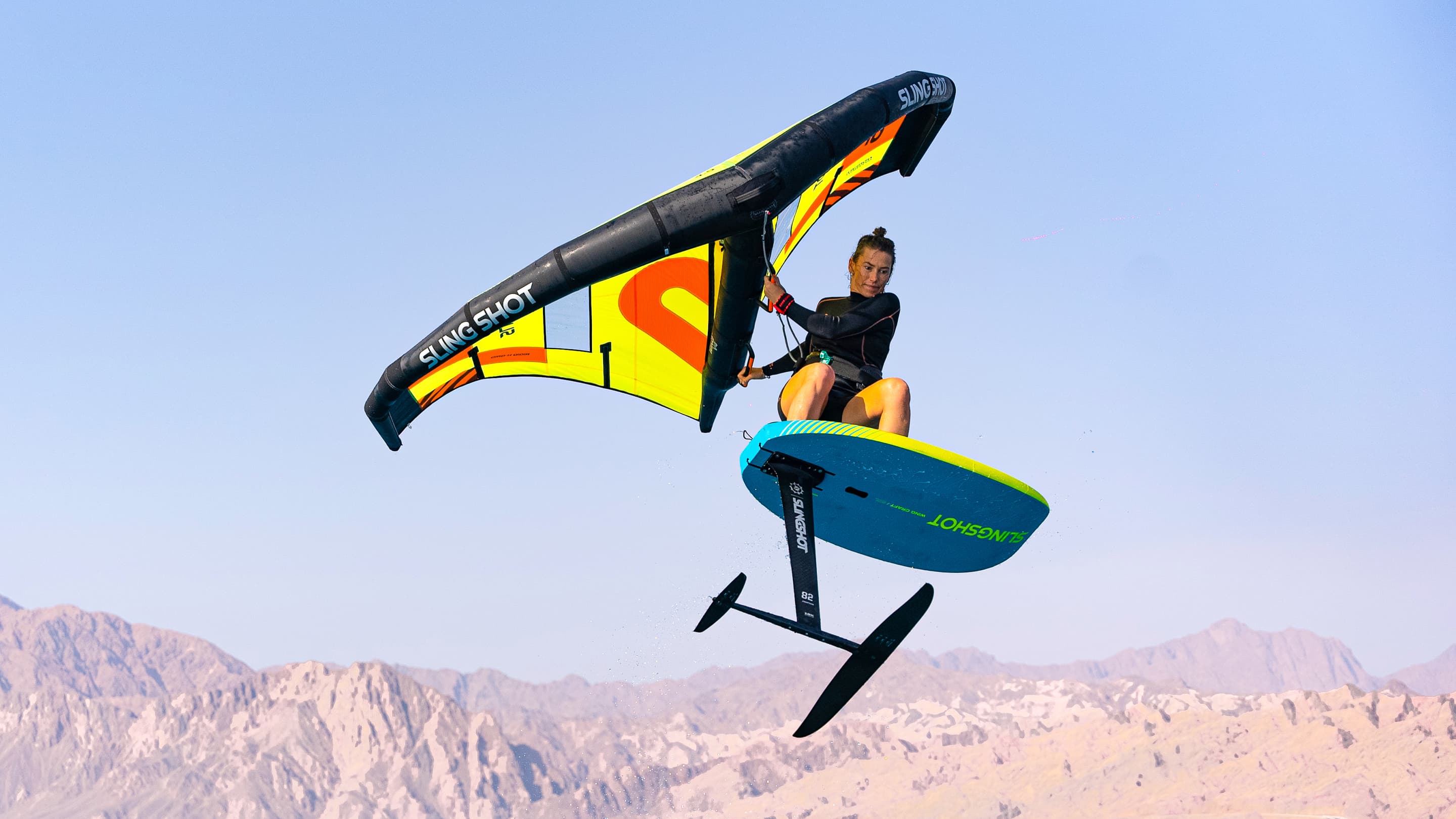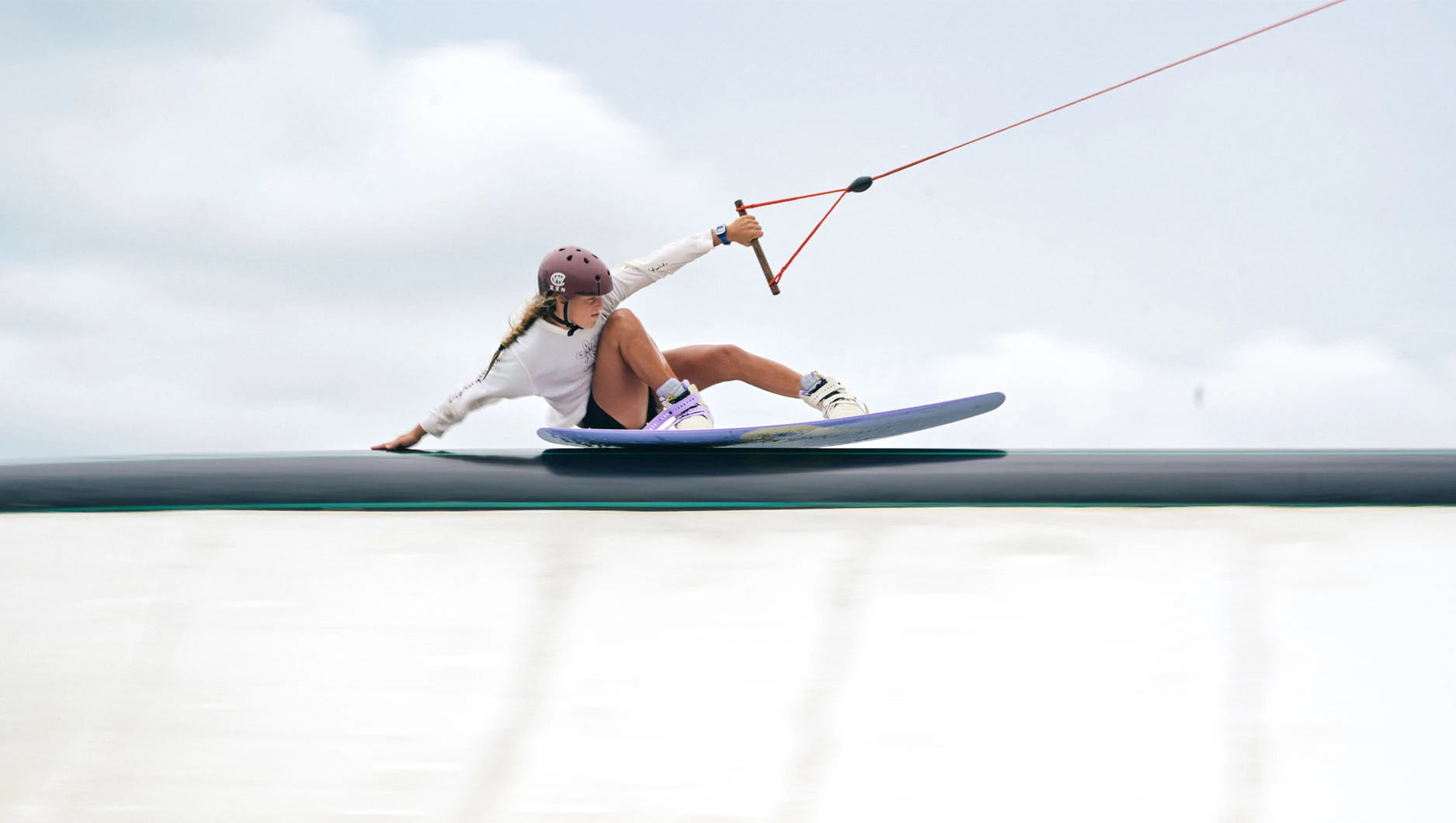When it comes to hydrofoil design, not all front wings are created equal—especially for kite foiling. While many brands repurpose surf or wing foil wings, Slingshot is one of the only companies that designs front wings specifically for kite foiling. But why does this matter?
Kite foiling presents a unique set of demands that require a different approach to front wing design. Let’s break down why kite-specific wings make such a difference and how the right choice can enhance your riding experience.
Why Glide Isn’t Always a Good Thing
In almost all foiling sports, glide is everything. Disciplines like prone and wing foiling need a wing that holds speed and carries through the water. They also need a wing that allows them to pump out to the next wave.
But in kite foiling, too much glide can work against you.
- When your foil glides too well, you outrun your kite, pushing you into slack lines and causing you to lose control.
- Excessive glide makes it harder to stay in sync with your kite’s power, especially when accelerating or riding through lulls.
- A lower-glide design keeps you seamlessly connected to your kite, allowing you to follow its movements with precision. It’s a dynamic dance, with the kite setting the rhythm and you responding.
This is why Slingshot kite foiling wings are engineered to keep glide lower—allowing you to stay engaged with the kite without overpowering or disconnecting.
Controlling Roll & Pitch for Maximum Performance
Foiling is a game of balance, and in kite foiling, roll and pitch are the two most critical axes to control.
Pitch Stability: Essential for beginners but limiting for advanced riders. When starting out, strong vertical stability helps maintain control, making the foil more forgiving. However, as your speed increases, too much pitch stability can cause foil lockout, restricting your ability to adjust ride height. Our smaller wings feature a higher aspect ratio, allowing for finer control and smoother adjustments.
Roll Stability: Similar to pitch, roll stability needs evolve with skill progression. Beginners benefit from more roll stability for balance, while advanced riders require greater roll freedom to execute sharper, more responsive turns. This is why our 1255, 855, and 755 wings feature distinct dihedral shapes, adjusting roll characteristics to match different riding styles.
Yaw Stability: In kite foiling, a locked-in yaw axis is crucial, especially at high speeds. Unlike in wing foiling—where unlocking yaw aids in carving and redirection—kite foiling demands steady tracking under power. Our designs prioritize yaw stability, ensuring the foil stays locked in and predictable, even when fully powered up. Instead, kite foil riders use roll and pitch to redirect themselves.
Wing Span: The Key to Stability & Breach Resistance
A wider wingspan can lead to more breaches when banking into turns. A carefully tuned wingspan prevents this from happening while maintaining the right amount of lift and stability.
- Too much wingspan → easier to breach, harder to control in aggressive maneuvers.
Slingshot kite foiling wings are designed with spans ranging from 657mm to 715mm. Anything higher results in a much larger chance of unwanted foil breaches.
It’s Not Just About Size—Profiles Matter
In kite foil front wings, a front wing with 855 cm² of surface area can feel completely different from one with 755 cm² due to its profile.
We use unique profiles tuned for different levels of riders:
- Beginner & progression-friendly wings have profiles that provide extra lift and stability, making it easier to get up and stay balanced.
- High-performance wings feature more aggressive profiles with less low end for better speed, maneuverability, and reduced drag.
This profile tuning ensures that every wing in our lineup delivers a dialed-in feel—not just a resized version of another model.
Our One-Lock line of kite front wings was designed with these core principles in mind. Each wing is carefully tailored to suit a specific rider, rather than simply being a scaled-down version of a larger model. This ensures that every rider, regardless of skill level, gets exactly what they need from their foil—allowing for faster progression, greater confidence, and more stoke on the water.




